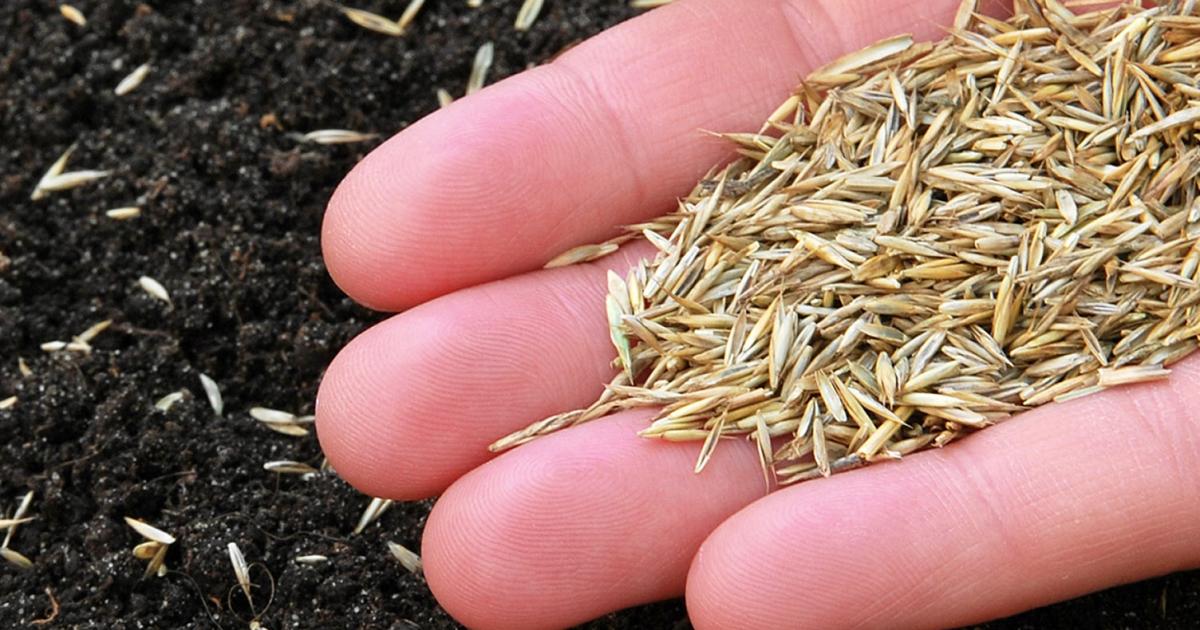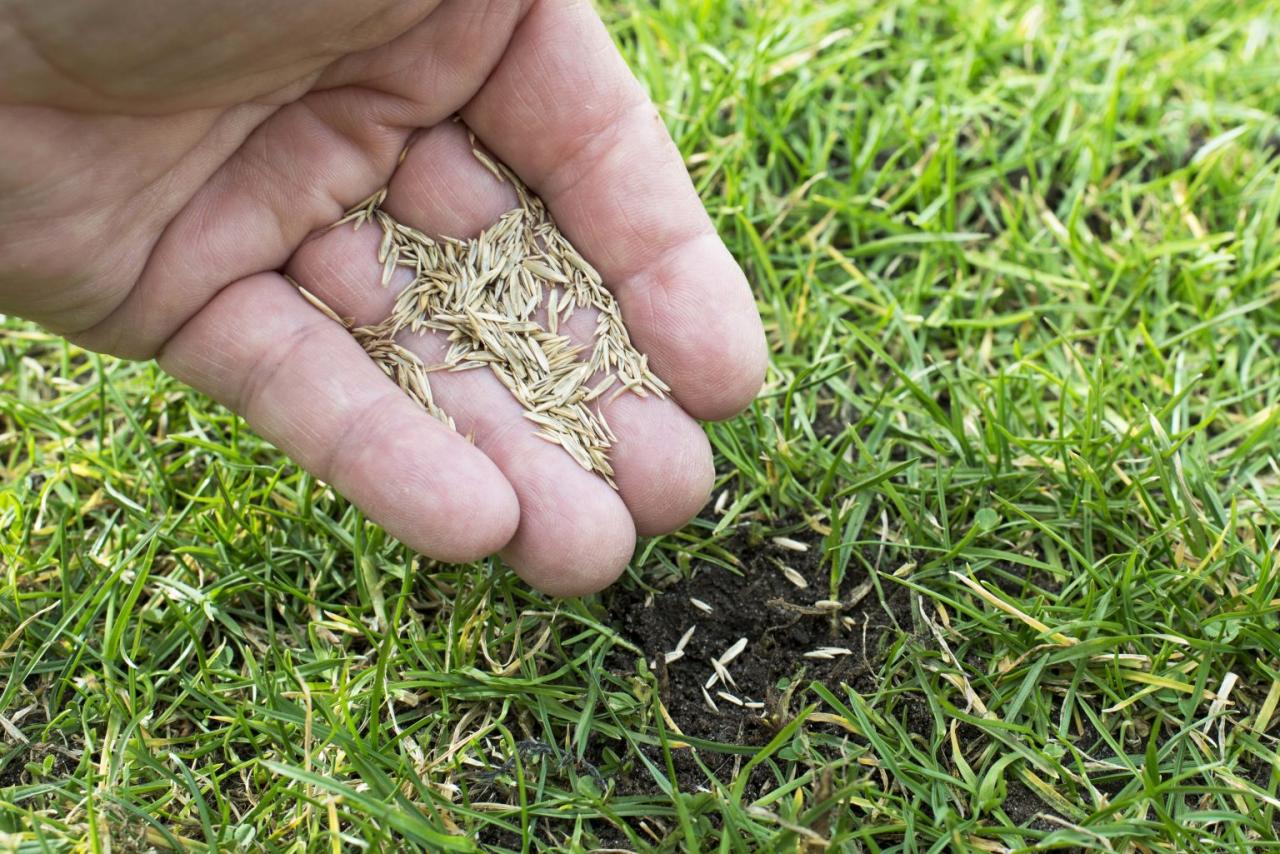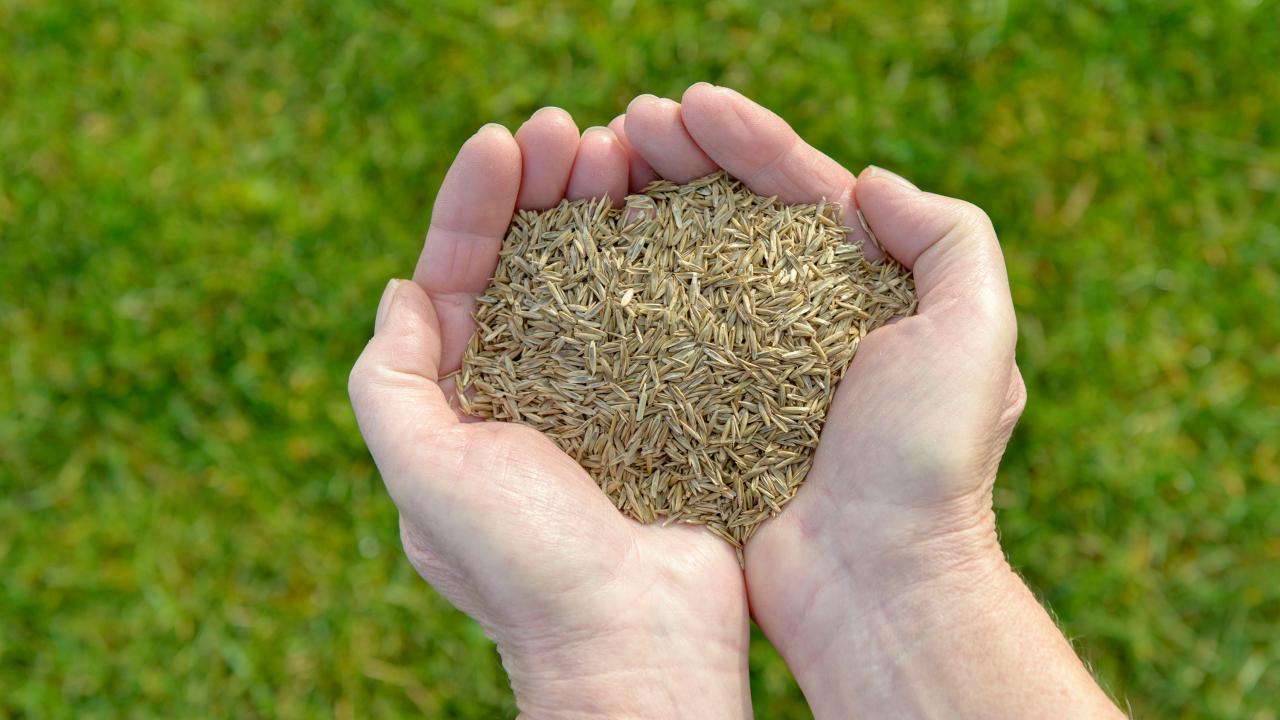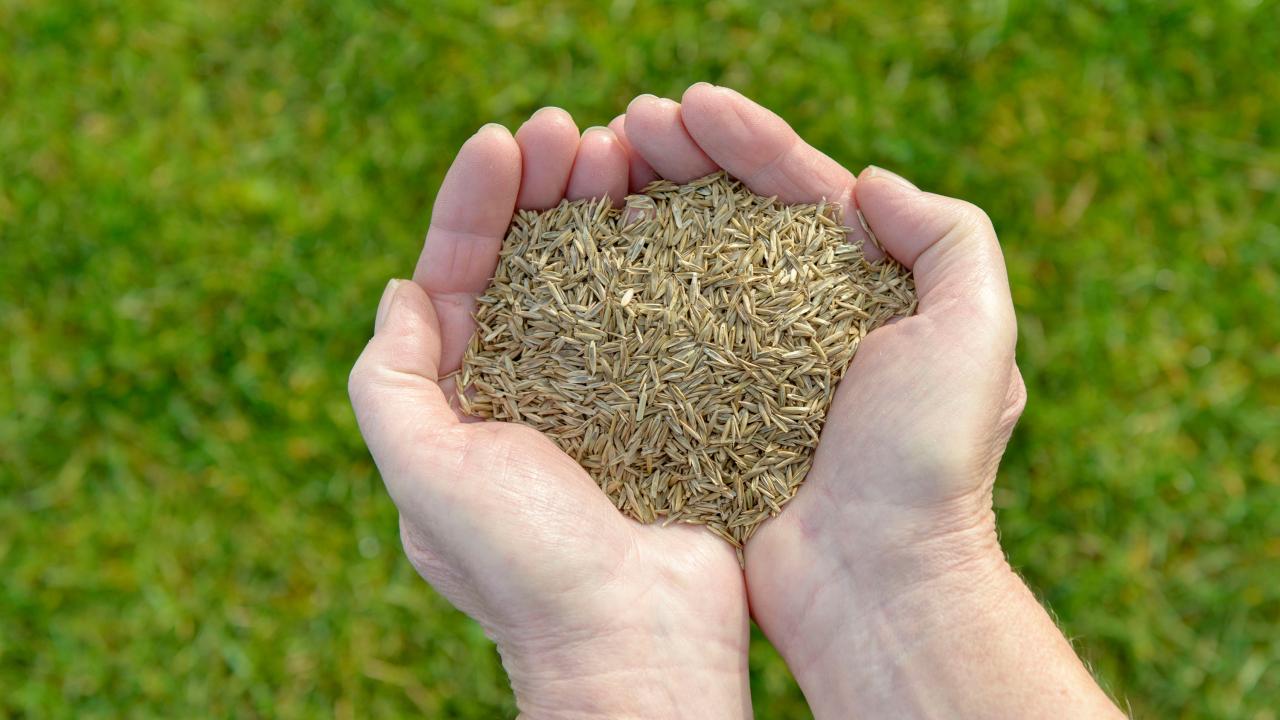The Best Time to Sow Grass Seed for a Beautiful and Green Lawn: Expert Guide, a lush, green lawn is a source of pride for any homeowner. But achieving that verdant landscape requires more than just wishful thinking. Timing is everything when it comes to sowing grass seed, and understanding the ideal conditions for germination and growth is crucial for success.
This comprehensive guide explores the best times to sow grass seed, covering both spring and fall seeding strategies. We’ll delve into the science behind seed germination, providing insights into the optimal temperatures, sunlight, and moisture levels needed for healthy grass growth.
From preparing your soil to choosing the right seed varieties, this guide offers expert advice to help you create a vibrant and resilient lawn.
Understanding the Ideal Time to Sow Grass Seed
Achieving a lush, green lawn requires careful planning, and choosing the right time to sow grass seed is crucial for success. The ideal time for seeding depends heavily on seasonal factors that directly influence grass seed germination and growth.
Optimal Temperature Range for Grass Seed Germination
The temperature of the soil plays a pivotal role in grass seed germination. Each grass type has an optimal temperature range for germination. For example, cool-season grasses, like Kentucky bluegrass and fescue, germinate best in cooler temperatures, typically between 60°F and 75°F (15°C and 24°C).
Warm-season grasses, such as Bermuda and zoysia, prefer warmer soil temperatures, usually between 75°F and 85°F (24°C and 29°C).
Soil Temperature’s Influence on Grass Seed Germination
Soil temperature directly impacts the rate at which grass seeds germinate. When the soil is too cold, seeds remain dormant, and germination is delayed. Conversely, if the soil is too hot, the seeds may be damaged or die. To determine the optimal soil temperature for your specific grass type, you can use a soil thermometer or consult with a local gardening expert.
Sunlight and Moisture: Essential for Grass Seed Success
Sunlight and moisture are critical for successful grass seed germination and establishment. Grass seeds require adequate sunlight for photosynthesis, the process by which they convert sunlight into energy for growth. They also need consistent moisture to germinate and develop roots.
Grass seeds typically need about 1 inch of water per week during the germination period.
During dry periods, you may need to supplement with irrigation to ensure adequate moisture levels.
Spring Seeding

Spring is a popular time to sow grass seed, as the warmer temperatures and increased moisture promote germination and growth. The ideal timeframe for spring seeding varies depending on your climate zone.
Spring Seeding Timeframes for Different Climate Zones
The ideal time for spring seeding is when the soil temperature reaches at least 50°F (10°C) at a depth of 2 inches. This ensures that the seeds have enough warmth to germinate and grow. Here’s a general guide for spring seeding timeframes in different climate zones:
- Zone 4-5:Mid-April to mid-May
- Zone 6-7:Mid-March to mid-April
- Zone 8-9:Early March to early April
Recommended Seeding Dates for Various Grass Types in Spring
The following table shows the recommended seeding dates for different grass types in spring, based on the average last frost date in each climate zone.
Grass Type |
Zone 4-5 |
Zone 6-7 |
Zone 8-9 |
|---|---|---|---|
Kentucky Bluegrass |
Mid-April to mid-May |
Mid-March to mid-April |
Early March to early April |
Perennial Ryegrass |
Mid-April to early May |
Mid-March to late March |
Early March to mid-March |
Fine Fescue |
Late April to early May |
Late March to early April |
Mid-March to late March |
Spring Seeding Preparation
Before you sow your grass seed, it’s important to prepare your soil properly. This includes:
- Soil Testing:A soil test will determine the pH and nutrient levels of your soil. This information will help you choose the right type of grass seed and fertilizer for your lawn.
- Fertilization:Apply a balanced fertilizer to your lawn before seeding. This will provide the nutrients your new grass needs to grow strong and healthy.
- Weed Control:Treat any existing weeds before you seed. This will prevent them from competing with your new grass for nutrients and water.
Spring Grass Seed Application
Once your soil is prepared, you can start seeding. Here’s a step-by-step guide:
- Choose the Right Grass Seed:Select a grass seed mix that is appropriate for your climate zone and soil type. Consider factors like shade tolerance, wear resistance, and drought tolerance.
- Determine the Seeding Rate:The seeding rate will vary depending on the type of grass seed you choose. Refer to the seed package for specific recommendations.
- Spread the Seed:Use a spreader to evenly distribute the grass seed over your lawn. Make sure to cover the entire area, including any bare patches.
- Incorporate the Seed:Lightly rake the seed into the soil to ensure good contact. This will also help protect the seed from birds and other pests.
- Water Regularly:Water the newly seeded lawn thoroughly and frequently, keeping the soil moist but not soggy. The soil should stay moist for the first few weeks after seeding.
Fall Seeding
Fall seeding offers a unique advantage for achieving a lush and vibrant lawn. Cooler temperatures, increased moisture, and shorter days create an ideal environment for grass seed germination and establishment. This method allows for deeper root development, leading to a stronger and more resilient lawn.
Ideal Timeframe for Fall Seeding
Fall seeding is recommended for most regions, but the optimal timing varies depending on the climate zone. It’s crucial to begin seeding before the first frost to allow for sufficient time for the grass to establish itself.
- Northern Climates:Seeding should be completed by mid-September to early October. This provides ample time for the grass to establish roots before winter.
- Mid-Latitude Climates:The recommended seeding window is from mid-September to early November. This allows for sufficient time for root development before the onset of colder temperatures.
- Southern Climates:Seeding can be done later in the fall, typically from mid-October to early December, depending on the specific region and the type of grass being seeded.
Recommended Seeding Dates for Various Grass Types in Fall
The ideal seeding time for specific grass types in fall varies based on their growth habits and regional climate. The table below provides a general guideline for common grass types:
Grass Type |
Recommended Seeding Dates (Fall) |
|---|---|
Kentucky Bluegrass |
Mid-September to early October |
Perennial Ryegrass |
Late September to early October |
Fine Fescue |
Late September to early October |
Tall Fescue |
Mid-September to early October |
Zoysia Grass |
Mid-September to early October |
Bermuda Grass |
Late September to early October |
Fall Seeding Preparation
Proper preparation is essential for successful fall seeding. This involves a series of steps to ensure optimal conditions for seed germination and growth.
Soil Testing
Soil testing is a crucial first step. It helps determine the soil’s pH level, nutrient content, and other factors that can impact grass growth. Soil testing kits are readily available at garden centers and online retailers.
Fertilization
Once soil testing is complete, apply the recommended amount of fertilizer. This will provide the necessary nutrients for healthy grass growth. Choose a fertilizer specifically designed for seeding, which typically has a higher phosphorus content to promote root development.
Weed Control
Weed control is essential before seeding. Existing weeds compete with grass seedlings for nutrients and water. Pre-emergent herbicides can be applied to prevent weed growth.
Overseeding
Overseeding involves spreading new grass seed over an existing lawn. This helps thicken the lawn, fill in bare spots, and improve its overall appearance.
Watering
Consistent watering is crucial for seed germination and establishment. Water deeply and regularly, ensuring the soil remains moist but not waterlogged.
Mowing
Avoid mowing the lawn during the first few weeks after seeding. This allows the grass to establish itself and develop a strong root system. Once the grass reaches a height of 3-4 inches, mow at a higher setting.
Factors Influencing Seed Success

Sowing grass seed is a crucial step in achieving a lush, green lawn. However, simply scattering seed on the ground is not enough. Several factors influence seed germination and growth, ultimately determining the success of your lawn. Understanding these factors allows you to create an environment conducive to healthy grass growth.
Soil Type
The soil type plays a significant role in grass seed germination and growth. Different grass species have varying soil preferences. For example, Kentucky bluegrass thrives in well-drained, slightly acidic soils, while fescue tolerates a wider range of soil conditions, including those with lower pH levels.
It’s essential to choose grass seed varieties suitable for your soil type.
Soil texture also influences seed success. Sandy soils drain quickly, potentially leading to moisture loss and seed dehydration. Clay soils, on the other hand, retain water but can become compacted, hindering root development. Ideally, a loam soil provides the perfect balance of drainage and moisture retention for optimal seed germination and growth.
Lawn Pests and Diseases
Various pests and diseases can affect newly sown grass, impacting its establishment and growth. Common lawn pests include grubs, chinch bugs, and white grubs. These insects feed on grass roots, causing damage and potentially killing the grass.
Several fungal diseases can also affect young grass. Examples include brown patch, dollar spot, and rust. These diseases can cause discoloration, thinning, and even death of the grass. To prevent these problems, it’s crucial to choose disease-resistant grass varieties and practice good lawn care practices, such as proper fertilization and watering.
Watering Techniques
Watering is critical for successful seed establishment. Newly sown grass requires consistent moisture to germinate and develop a strong root system. Proper watering techniques ensure the seed receives the necessary moisture without overwatering or drying out.
The key is to water frequently and lightly, keeping the soil moist but not soggy. Deep watering promotes root development, allowing the grass to withstand drought conditions. Avoid overwatering, as it can lead to fungal diseases and root rot.
Consistent moisture is key for healthy grass growth.
Protecting New Grass from Extreme Weather, The Best Time to Sow Grass Seed for a Beautiful and Green Lawn: Expert Guide
Newly sown grass is vulnerable to extreme weather conditions, such as heat, cold, and heavy rain. Protecting the young grass from these conditions is essential for its survival and healthy growth.
Achieving a lush, green lawn requires careful planning, and choosing the right time to sow grass seed is crucial. Just like with your lawn, knowing the best time to propagate your plants can make a huge difference in their success.
For example, if you’re looking to expand your ivy collection, check out Give Your Ivy a New Life: Simple Propagation Steps You’ll Love for expert tips on how to propagate your ivy. Once you’ve mastered the art of propagation, you can focus on your lawn and choose the optimal time to sow grass seed for the best results.
During hot weather, frequent watering is crucial to prevent the soil from drying out. Consider using shade cloths to protect the grass from intense sunlight. In cold weather, a light layer of mulch can help insulate the soil and prevent frost damage.
Heavy rain can wash away seed and compact the soil, hindering germination. Consider using a straw mulch to protect the seed and prevent erosion. It’s also important to avoid walking on the newly sown area until the grass has established itself.
Choosing the Right Grass Seed
Selecting the right grass seed is crucial for establishing a healthy and thriving lawn. It’s like choosing the right ingredients for a delicious meal; the wrong choice can result in a disappointing outcome. Consider your region’s climate, the amount of sunlight your lawn receives, and how you intend to use your lawn to determine the best grass seed type for your needs.
Grass Types and Their Characteristics
Understanding the different grass types and their characteristics is essential for making an informed decision.
- Cool-Season Grasses:These grasses thrive in cooler temperatures and are best suited for regions with moderate summers and cold winters. They are typically dormant during hot summer months but regrow in the fall and spring. Examples include Kentucky bluegrass, fine fescue, and perennial ryegrass.
- Warm-Season Grasses:Warm-season grasses prefer hot and humid climates and flourish during the summer months. They are often dormant in the winter. Popular varieties include Bermuda grass, zoysia grass, and St. Augustine grass.
Comparing Grass Types
Each grass type offers distinct advantages and disadvantages:
Grass Type |
Characteristics |
Advantages |
Disadvantages |
|---|---|---|---|
Kentucky Bluegrass |
Dense, dark green, drought-tolerant, good wear tolerance |
Forms a thick, attractive lawn, requires less frequent mowing |
Can be slow to establish, susceptible to diseases in hot weather |
Fine Fescue |
Fine-textured, shade-tolerant, low maintenance |
Ideal for shady areas, requires less water and fertilizer |
Can be slow to establish, susceptible to diseases in hot weather |
Perennial Ryegrass |
Fast-growing, quick to establish, good for overseeding |
Provides quick green-up, suitable for high-traffic areas |
Short-lived, may require frequent reseeding |
Bermuda Grass |
Thick, dark green, aggressive growth, drought-tolerant |
Forms a dense, durable lawn, requires less frequent mowing |
Can be invasive, susceptible to diseases in cool weather |
Zoysia Grass |
Fine-textured, slow-growing, drought-tolerant |
Forms a thick, durable lawn, requires less frequent mowing |
Can be slow to establish, susceptible to diseases in cool weather |
St. Augustine Grass |
Coarse-textured, shade-tolerant, drought-tolerant |
Forms a thick, attractive lawn, requires less frequent mowing |
Can be invasive, susceptible to diseases in cool weather |
The Benefits of Using a Seed Mixture
Using a seed mixture offers several advantages over using a single grass type:
- Increased Diversity:A mixture provides a variety of grass types, which can help create a more resilient lawn that is better able to withstand environmental stresses.
- Improved Disease Resistance:Mixing different grass types can reduce the risk of diseases spreading throughout the lawn.
- Enhanced Wear Tolerance:A mixture of grasses with varying growth habits and textures can provide a more durable lawn that can withstand heavy foot traffic.
- Better Adaptability:A mixture can be better suited to different microclimates within your lawn, ensuring that some grasses thrive even in shaded areas.
Post-Seeding Care: The Best Time To Sow Grass Seed For A Beautiful And Green Lawn: Expert Guide
After you’ve sown your grass seed, the work isn’t over. Providing proper post-seeding care is crucial for ensuring your new lawn thrives and establishes itself successfully. This involves a combination of consistent watering, fertilization, and careful maintenance practices.
Watering
Regular watering is paramount for seed germination and root development. Newly sown seeds require consistent moisture to sprout and establish a strong root system. The frequency and amount of watering depend on factors such as climate, soil type, and seed variety.
- Frequency:Water your lawn frequently, aiming for light, consistent watering rather than deep, infrequent watering. This encourages shallow root development, which is essential for a healthy lawn.
- Depth:Water deeply enough to moisten the soil to a depth of 1-2 inches. This ensures the seeds receive adequate moisture for germination and root growth.
- Timing:Early morning watering is generally preferred as it minimizes water loss through evaporation and allows the grass to dry slightly before nightfall, reducing the risk of disease.
Fertilization
Fertilization plays a vital role in providing the necessary nutrients for healthy grass growth. Newly established lawns benefit from a balanced fertilizer that promotes root development and overall plant health.
- Timing:Apply fertilizer after the grass has established itself, typically 4-6 weeks after seeding. This allows the roots to develop properly before introducing additional nutrients.
- Type:Choose a starter fertilizer specifically formulated for new lawns. These fertilizers are typically high in phosphorus, which promotes root growth, and nitrogen, which supports blade growth.
- Application:Apply fertilizer evenly across the lawn, following the manufacturer’s instructions for application rate and frequency. Avoid over-fertilizing, as it can lead to nutrient imbalances and damage the lawn.
Mowing
Proper mowing techniques are essential for maintaining a healthy and aesthetically pleasing lawn.
- Height:Wait until the grass has reached a height of 3-4 inches before mowing for the first time. This allows the grass to establish a strong root system.
- Frequency:Mow your lawn regularly, removing no more than 1/3 of the grass blade height at each mowing. This promotes healthy growth and prevents stress on the lawn.
- Blade Sharpness:Use sharp mower blades to ensure a clean cut and minimize damage to the grass blades. Dull blades can tear the grass, making it more susceptible to disease and pests.
Weed Control
Weeds can compete with your newly established grass for nutrients, water, and sunlight, hindering its growth and overall health. Effective weed control is essential for maintaining a beautiful and healthy lawn.
- Prevention:Regular mowing, proper watering, and fertilization help prevent weed growth by promoting a dense, healthy lawn that can outcompete weeds.
- Manual Removal:Hand-pulling or hoeing weeds is an effective method for small infestations, especially during the early stages of lawn establishment.
- Herbicides:In cases of widespread weed infestations, herbicides can be used to control weeds. However, use herbicides cautiously and always follow the manufacturer’s instructions. Apply herbicides when the grass is actively growing and avoid applying them on windy days to prevent drift onto desirable plants.
Managing Pests and Diseases
Pests and diseases can pose a threat to your lawn’s health and appearance.
While you’re focusing on creating a lush lawn with the right timing for seeding, consider adding a touch of autumnal charm to your home décor. Embrace the season’s beauty with a DIY leaf garland, following the easy instructions found in this guide , and bring the warmth of fall indoors.
Once you’ve mastered the art of lawn care, you can enjoy the fruits of your labor in a beautifully decorated home.
- Prevention:A healthy lawn is more resistant to pests and diseases. Proper watering, fertilization, and mowing practices help maintain a strong and resilient lawn.
- Identification:Monitor your lawn regularly for signs of pests and diseases. Early detection allows for prompt treatment and minimizes damage.
- Treatment:If you suspect a pest or disease problem, consult with a lawn care professional for diagnosis and treatment recommendations. There are various control methods available, including organic and chemical options. Choose the most appropriate treatment based on the specific pest or disease and the severity of the infestation.
Outcome Summary

By understanding the nuances of seasonal factors, soil conditions, and proper post-seeding care, you can set the stage for a thriving lawn that will be the envy of your neighborhood. With the right knowledge and a little effort, you can transform your lawn from a patchy eyesore to a lush green oasis.
So, grab your gardening gloves, choose the right seed, and let’s get started on your journey to a beautiful and green lawn.
Q&A
What is the best type of grass seed for my region?
The best type of grass seed depends on your specific climate and desired lawn usage. Consider factors like sun exposure, soil type, and your desired level of maintenance.
How long does it take for grass seed to germinate?
Germination time varies depending on the type of grass seed and environmental conditions. Most grass seeds will germinate within 7 to 14 days.
How often should I water my newly seeded lawn?
Keep the soil consistently moist but not waterlogged. Water deeply and less frequently to encourage root development.
When can I start mowing my new lawn?
Wait until the grass has reached a height of 2 to 3 inches before mowing for the first time. Mow at a higher height initially to encourage root growth.
